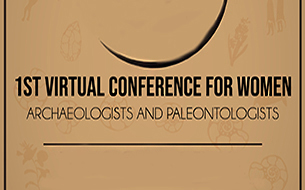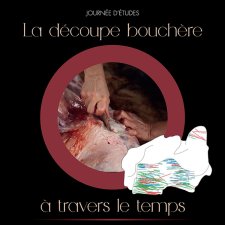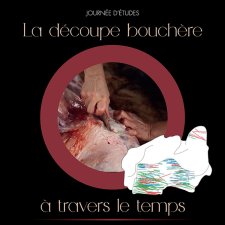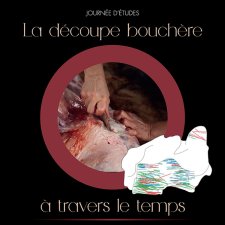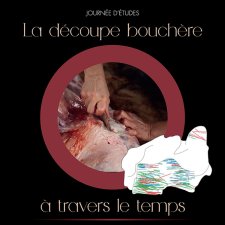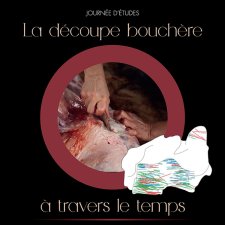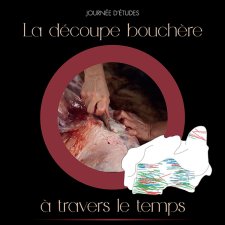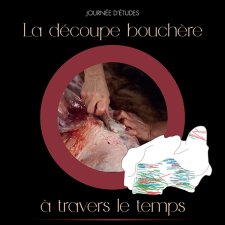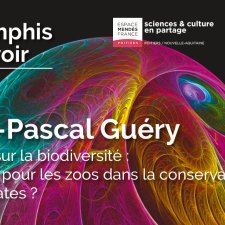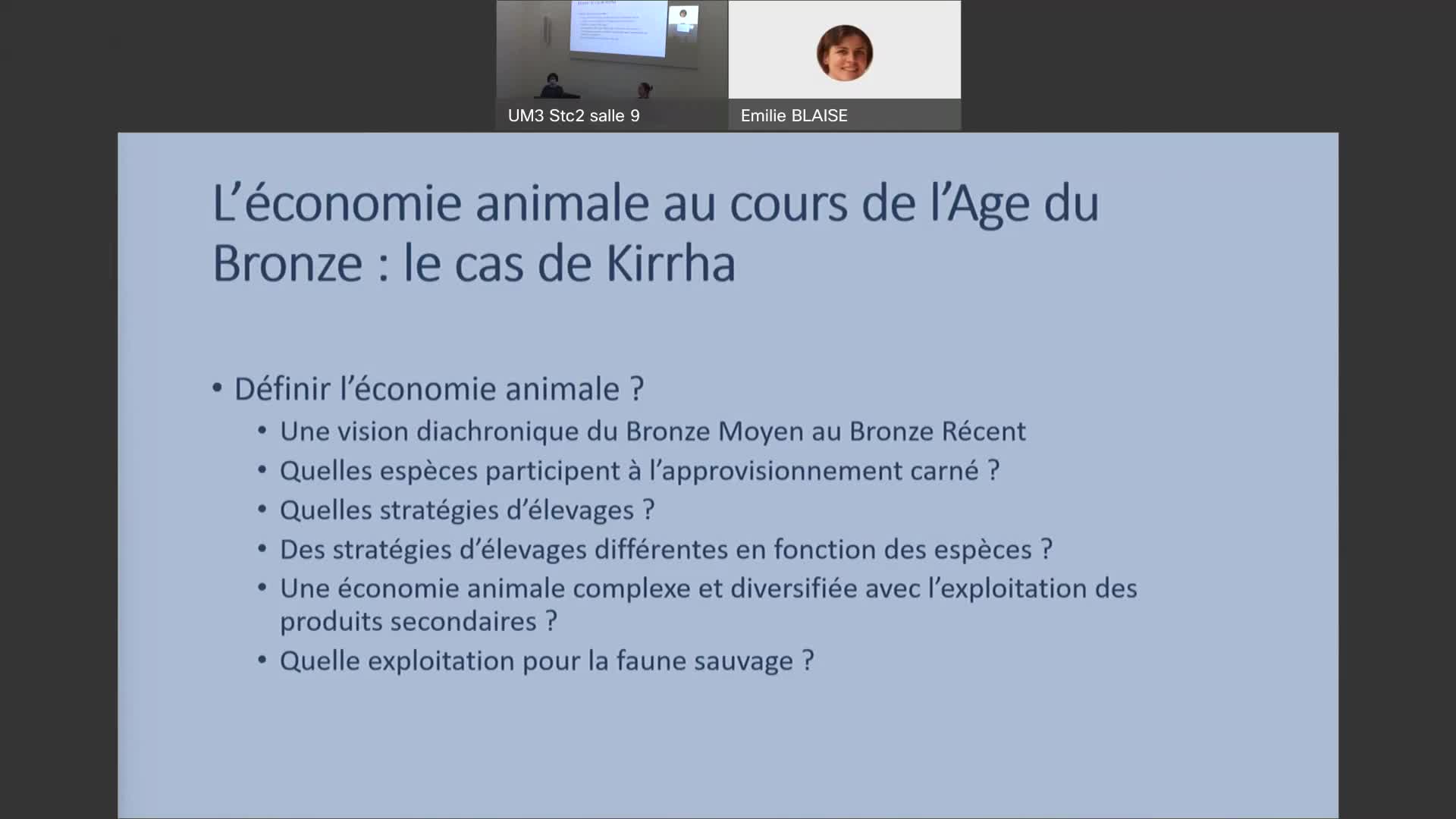Notice
Comminution capabilities of extant and fossil anthropoids during molar intercuspation: a preliminary experiment using a chewing simulator / Axelle E. C. Walker
- document 1 document 2 document 3
- niveau 1 niveau 2 niveau 3
Descriptif
Comminution capabilities of extant and fossil anthropoids during molar intercuspation: a preliminary experiment using a chewing simulator / Axelle E. C. Walker, in colloque "1st Virtual Conference for Women Archaeologists and Paleontologists. Nouveaux apports à l’étude des populations et environnements passés" organisé par le laboratoire Travaux et Recherches Archéologiques sur les Cultures, les Espaces et les Sociétés (TRACES) de l’Université Toulouse Jean Jaurès et le laboratoire Paléontologie Évolution Paléoécosystèmes (PALEVOPRIM) de l'Université de Poitiers, sous la responsabilité scientifique de Julie Bachellerie, Ana Belén Galán López (Traces), Émilie Berlioz et Margot Louail (Palevoprim). Université Toulouse Jean Jaurès, 8-9 mars 2021.
Session 1: Morphological variability, taxonomy and adaptations.
Mammalian teeth and especially molars play a key role in food fragmentation through cyclic dental occlusion during chewing. Mammals fragment food items with various degrees of efficiency depending on their dental morphology. This implies a potential adaptive link between dental morphology and its capability to fragment consumed food items. Understanding dental evolutionary history thus requires to discern which food items, if not all, induce selective pressures on teeth. While molar morphology is expected to influence chewing efficiency and thus the amount of assimilated nutrients, distinct dental occlusal patterns are expected to perform better with particular food items. Testing this hypothesis requires to measure the contribution of the components of chewing and an assessment of chewing efficiency in food fragmentation.Here, we present a preliminary experiment of comminution capabilities in catarrhine primates using a chewing simulator (BeA). This study aims to test the effect of molar morphology during centric occlusion, between phases I and II, i.e. at maximal intercuspation with little or no shearing and grinding, on the comminution of five different food items, which correspond to different mechanical challenges encountered by extant catarrhines in the wild. Using the chewing simulator, we experimentally measure the number of food fragments produced after 5 successive intercuspations in catarrhines displaying different dental occlusal patterns when they consume ductile and tough foods (Procolobus verus, Theropithecus gelada and Gorilla b. graueri) and brittle foods (Homo sapiens).We show that increasing bite force results overall in higher food item degradation, but exceptions are reported notably for ductile and soft foods (apples, gingers and leaves). Intercuspation contributes to the fragmentation of food during the chewing cycle, cusp interlocking fragments brittle and complex food (hazelnuts and crickets). This preliminary experiment sheds light on masticatory capacities of various occlusal patterns in primates and our ability to test these with robotics.
Thème
Documentation
Références documentaires
Swackhamer, C., & Bornhorst, Gail. M. (2019). Fracture properties of foods: Experimental considerations and applications to mastication, Journal of Food Engineering, 263, 213–226. [En ligne : https://doi.org/10.1016/j.jfoodeng.2019.07.002].
Butler, P. M. (eds) (2007). The evolution of tooth shape and tooth function in primates, in Development, function and evolution of teeth, Cambridge University Press, 201-211.
Salles,
C., Tarrega, A., Mielle, P., Maratray, J., Gorria, P., Liaboeuf, J.,
& Liodenot, J. J. (2007). Development of a chewing simulator for
food breakdown and the analysis of in vitro flavor compound release in a
mouth environment, Journal of Food Engineering, 82(2), 189-198.
Lucas, P. W. (2004). Dental functional morphology: how teeth work. Cambridge University Press.
Kay, R. F. (1975). The functional adaptations of primate molar teeth, American Journal of Physical Anthropology, 43(2), 195–215. [En ligne : https://doi.org/10.1002/ajpa.1330430207].
YAMAGIWA, Juichi, BASABOSE KANYUNYI, Augustin, KALEME, Kiswele et al. (2005). Diet of Grauer's gorillas in the montane forest of Kahuzi, Democratic Republic of Congo, International Journal of Primatology, 6, vol. 26, 1345-1373.
Liens
Programme du colloque "1st Virtual Conference for Women Archaeologists and Paleontologists" (8-9 mars 2021)
Website du Laboratoire Paléontologie Évolution Paléoécosystèmes Paléoprimatologie (PALEVOPRIM)
Livret des résumés des communications du colloque "1st Virtual Conference for Women Archaeologists and Paleontologists. Nouveaux apports à l’étude des populations et environnements passés" (8-9 mars 2021)
Site internet dédié au colloque "1st Virtual Conference for Women Archaeologists and Paleontologists" (8-9 mars 2021)
Les femmes en paléontologie. La paléontologie
une affaire d'homme ? Partie 1. Laboratoire PALEVOPRIM
Dans la même collection
-
Sensivity analysis to morphological changes of the shoulder joint: application to percussio…
Blasi-ToccacceliAliciaSensivity analysis to morphological changes of the shoulder joint: application to percussion gestures during Oldowan debitage / Alicia Blasi-Toccacceli, in colloque "1st Virtual Conference for
-
"Ouranopithecus macedoniensis" (late Miocene, Greece): analysis of mandibular fragments using …
IoannidouMelaniaOuranopithecus macedoniensis (late Miocene, Greece): analysis of mandibular fragments using 3D geometric morphometrics / Melania Ioannidou, in colloque "1st Virtual Conference for Women
-
New sperm whale cranium from the late Miocene and a revised family attribution for the small crown …
AlfsenApollineNew sperm whale cranium from the late Miocene and a revised family attribution for the small crown physeteroid Thalassocetus / Apolline Alfsen, in colloque "1st Virtual Conference for Women
-
What is shaping the brain? A perspective on brain size evolution in carnivorans / Margot…
MichaudMargotWhat is shaping the brain? A perspective on brain size evolution in carnivorans / Margot Michaud, in colloque "1st Virtual Conference for Women Archaeologists and Paleontologists. Nouveaux
-
Postnatal shape changes in the rodent mandible at a macroevolutionary scale / Morgane Dubied
DubiedMorganePostnatal shape changes in the rodent mandible at a macroevolutionary scale / Morgane Dubied, in colloque "1st Virtual Conference for Women Archaeologists and Paleontologists. Nouveaux apports à l
-
Cranial vault healing in modern humans: input of archaeological and clinical data / Aliéno…
LepetitAliénorCranial vault healing in modern humans: input of archaeological and clinical data / Aliénor Lepetit, in colloque "1st Virtual Conference for Women Archaeologists and Paleontologists. Nouveaux
-
A transdisciplinary approach to reconstruct the Nilotic socio-ecosystem in Luxor west bank during t…
NicatoreGiuliaA transdisciplinary approach to reconstruct the Nilotic socio-ecosystem in Luxor west bank during the Ptolemaic period (3rd-1st centuries BC.) / Giulia Nicatore, in colloque "1st Virtual Conference
-
From monoliths to megaliths: a new approach on the megalithic burials of southwestern France / Bosc…
BoscusSarahFrom monoliths to megaliths: a new approach on the megalithic burials of southwestern France / Boscus Sarah, in colloque "1st Virtual Conference for Women Archaeologists and Paleontologists. Nouveaux
-
Tracing Human Ancestral Migration from its Symbiotic Bacteria / Alexia Nguyen Trung
Nguyen TrungAlexiaTracing Human Ancestral Migration from its Symbiotic Bacteria / Alexia Nguyen Trung, in colloque "1st Virtual Conference for Women Archaeologists and Paleontologists. Nouveaux apports à l’étude des
-
Foragers and their symbolic landscape. Understanding the role of rock art in the territoriality of …
JobardLéaForagers and their symbolic landscape. Understanding the role of rock art in the territoriality of Later Stone Age Matobo populations / Léa Jobard, in colloque "1st Virtual Conference for Women
-
Towards a tracking of past bird seasonal migrations through geological times: what could isotopes t…
DuhamelAnaïsTowards a tracking of past bird seasonal migrations through geological times: what could isotopes tell us? / Anaïs Duhamel, in colloque "1st Virtual Conference for Women Archaeologists and
-
Study of human group behaviors during the Last Glacial Maximum in the east Carpathian area from zoo…
DemayLaëtitiaStudy of human group behaviors during the Last Glacial Maximum in the east Carpathian area from zooarchaeological remains / Laëticia Demay, in colloque "1st Virtual Conference for Women Archaeologists
Sur le même thème
-
La découpe bouchère à travers le temps : introduction de la journée d'études
CostamagnoSandrineÀ destination principalement des étudiantes et étudiants en archéologie ainsi que des archéozoologues, cette journée visait à mettre en lumière la diversité des pratiques de boucherie à travers le
-
Décharner, mettre en pièces, fracturer le gibier au Paléolithique : même menu, mêmes façons de fair…
SoulierMarie-CécileBirousteClémentCostamagnoSandrineÀ destination principalement des étudiantes et étudiants en archéologie ainsi que des archéozoologues, cette journée visait à mettre en lumière la diversité des pratiques de boucherie à travers le
-
Défaire pour bien faire ? La désarticulation des basipodes de renne au Magdalénien moyen
BirousteClémentCostamagnoSandrineÀ destination principalement des étudiantes et étudiants en archéologie ainsi que des archéozoologues, cette journée visait à mettre en lumière la diversité des pratiques de boucherie à travers le
-
Jusqu’où peut-on aller dans la description des pratiques bouchères des groupes humains préhistoriqu…
ValAuroreÀ destination principalement des étudiantes et étudiants en archéologie ainsi que des archéozoologues, cette journée visait à mettre en lumière la diversité des pratiques de boucherie à travers le
-
Mes os sans stries… le partage et la découpe au Mésolithique
GardeurMarineMallyeJean-BaptisteÀ destination principalement des étudiantes et étudiants en archéologie ainsi que des archéozoologues, cette journée visait à mettre en lumière la diversité des pratiques de boucherie à travers le
-
Restituer l’histoire de la boucherie par l’archéologie : l’exemple de la période gauloise
Roure-HorardMarie-PierreÀ destination principalement des étudiantes et étudiants en archéologie ainsi que des archéozoologues, cette journée visait à mettre en lumière la diversité des pratiques de boucherie à travers le
-
Archéozoologie et alimentation médiévale : focus sur une boucherie à Saint-Quentin (XVe siècle)
ClavelBenoîtÀ destination principalement des étudiantes et étudiants en archéologie ainsi que des archéozoologues, cette journée visait à mettre en lumière la diversité des pratiques de boucherie à travers le
-
Du pot aux recettes : expérimentation de préparations gauloises, romaines, médiévales et modernes,…
Roure-HorardMarie-PierreNous disposons, sur de nombreux sites archéologiques, de céramiques à usage culinaire gauloises, romaines, médiévales et modernes dont les argiles ont enregistré, par imprégnation, les marqueurs
-
L'Homme #1 - La place de l'Homme dans la Nature
Brunet-MalbrancqJoëlleFromentAlainCauseries des Sciences de la Vie et de la Terre - L'Homme #1 - La place de l'Homme dans la Nature
-
Menace sur la biodiversité : quel rôle pour les zoos dans la conservation des primates ?
Conférence de Jean-Pascal Guéry, directeur général adjoint, directeur animalier, science et conservation de la Vallée des singes. À l’heure où la biodiversité est cruellement mise à mal par les
-
Alimentation et élevage en Grèce centrale à l’âge du Bronze. Le cas de Kirrha
OrgeoletRaphaëlAniMed, 24 février 2022 - Raphaël ORGEOLET (MCF, CCJ Aix-en-Provence) et Marion SIRITO-OLIVIER (doctorante UPV-Montpellier 3, archéozoologue, UMR 5140 ASM)
-


